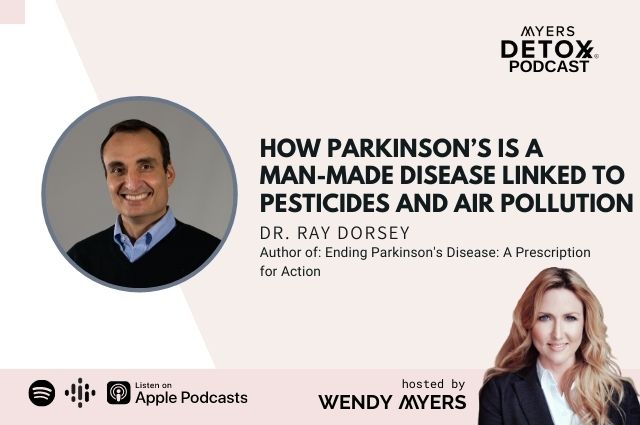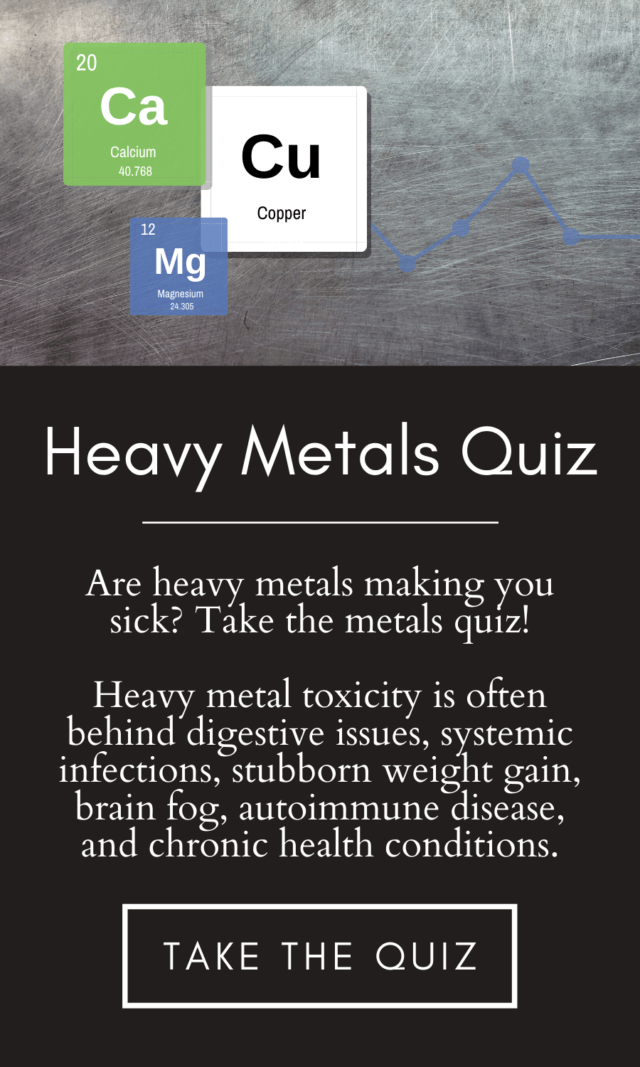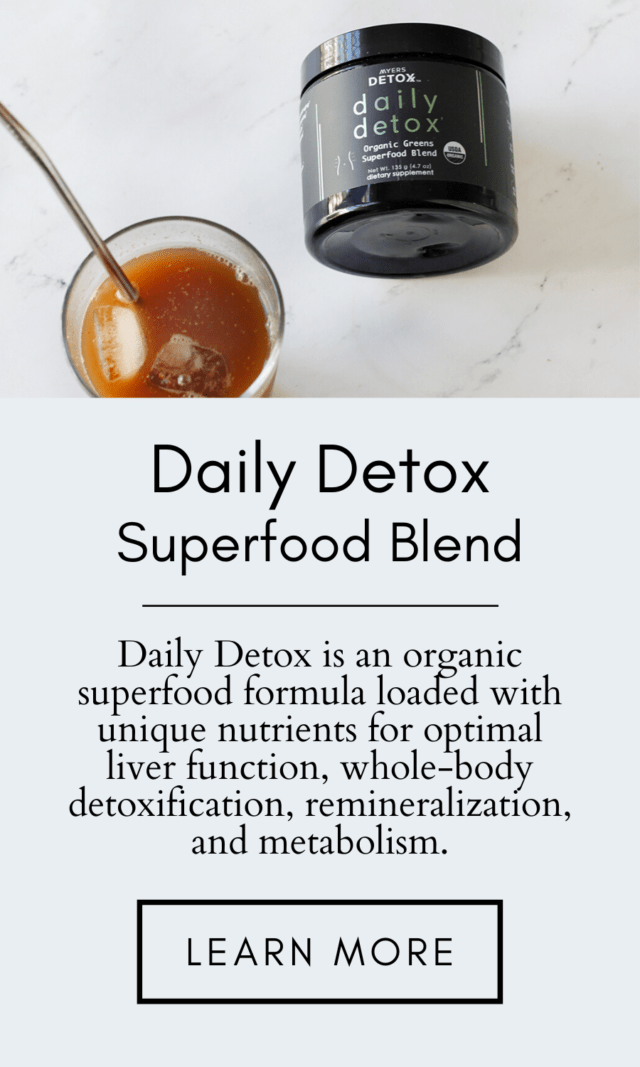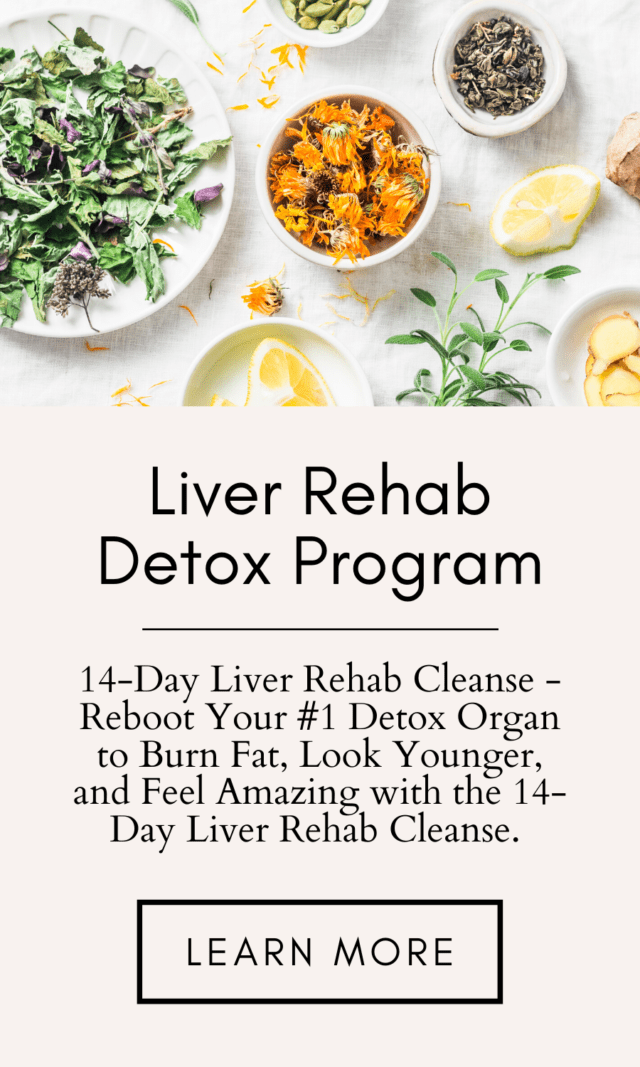Transcript #360 How Parkinson’s Is a Man-Made Disease Directly Linked to Pesticides and Air Pollution with Dr. Ray Dorsey

Listen
Listen to this podcast or watch the video. CLICK HERE
Transcript
Download PDF
Click to jump to a section!
- Find out what’s in store for this Myers Detox Podcast with Dr. Ray Dorsey, a prominent neurologist campaigning to educate people about the man-made causes of Parkinson’s, like heavy metals, pesticides, air pollution, and more!
- Parkinson’s is one of the world’s fastest growing disease with 1.1 million American’s with the disease, and an estimated 12.9 million cases worldwide by 2040. Learn more about why Parkinson’s is a fast growing disease and who is getting it.
- The earliest signs of Parkinson’s is constipation and loss of smell. Learn more about what Parkinson’s actually is.
- Nanoparticles of toxins found in air pollution can bypass protective mechanisms of the brain and lead to Parkinson’s. Find out more about what toxins in the air can cause Parkinson’s, and the types of pesticides that can also lead to the disease.
- Many agrochemicals used in industrial farming can leech into the water table and pollute private wells. Learn more about the chemicals that can pollute our drinking water including the most common organic groundwater contaminant, trichloroethylene.
- Heavy metals like manganese and iron can lead to Parkinson’s. Find out more.
- Paraquat, an agrochemical that has been banned in 32 countries including China, Syria, and the United Arab Emerates (not the US), was used in initial animal studies for Parkinson’s because of its reliability in forming Parkinson’s in those animals. Find out more about this chemical and other agro chemicals that are still widely used in the US.
- In some individuals, the first signs of pathology are found in the gut. Learn more about why this is.
- A Mediterranean diet, which is low in animal products and high in fruits and vegetables, might decrease your risk of developing Parkinson’s disease by up to 20%! Find out why, and learn about other foods that can decrease your risk of the disease.
- Filtering your water, washing your fruits and vegetables, wearing protective gear when working with chemicals and pesticides, and following a prevention method that Dr. Dorsey created called PACT, are all great methods of preventing Parkinson’s. Learn more about what you can do and how to use the method PACT.
- Read Dr. Dorsey’s closing remarks about his ultimate goal in helping people put in to place preventative measures to protect themselves against Parkinson’s.
- You can learn more about Dr. Dorsey and his work, and how you can prevent Parkinson’s at www.EndingPD.org
- Make sure to check out Dr. Dorsey’s incredible book “Ending Parkinson’s Disease: A Prescription for Action” Click here!
Wendy Myers: Hello, everyone. My name is Wendy Myers. Welcome to The Myers Detox Podcast. On this show and on my website, myersdetox.com, we talk about all different topics related to detoxification and toxins. Things like heavy metals, pesticides and chemicals that contribute to a myriad of health conditions and symptoms.
Wendy Myers: Today, we’re going to focus on Parkinson’s disease. I have Dr. Ray Dorsey, who is a neurologist campaigning to educate people about the man-made causes of Parkinson’s. He believes that Parkinson’s is a man-made disease caused by heavy metals, pesticides, chemicals and air pollution. He wanted to talk about that in-depth today. Some of the things that we’re going to cover are topics like the number one heavy metal that causes Parkinson’s-like symptoms and how you get this metal. We’ll talk about the pesticide more toxic than glyphosate. Scientists use it in labs to induce Parkinson’s in mice. It also causes Parkinson’s in humans. The fact is, this pesticide is still used in the United States but banned in countries like China, Europe, Russia and Africa.
Wendy Myers: We’ll also talk about the two early warning signs of Parkinson’s and what to look for. We’ll talk about the link between air pollution and Parkinson’s and why Dr. Dorsey has found, in the research, that these nanoparticles in air pollution get into our nose through our olfactories. They get into our nervous system and get into our brain. He’ll also talk about why he believes Parkinson’s is a man-made disease and because of that, it’s totally preventable. He talks about what you can do to prevent and reverse Parkinson’s. It’s a very, very good show today. Some of our most popular content is about the brain, improving functioning of the brain and preventing diseases of the brain. This show is no different, so buckle up. This is going to be a really good show.
Wendy Myers: I know some of you guys listening are concerned about the level of toxins in your body. That’s why I created The Heavy Metals Quiz. You can go to heavymetalsquiz.com and take the two-minute quiz. Based on a bunch of lifestyle factors, we give you your assessment of whether you have high, low, or medium levels of toxins and what you can do about that. After you get your results, you will get a free video series that answers a lot of your frequently asked questions about how to detox. Questions like how long does it take? What kind of testing should I do to find out my heavy metals? Lots of other questions are answered too, so go check that out at heavymetalsquiz.com.
Wendy Myers: Our guest today is Dr. Ray Dorsey. He is a David M. Levy professor of neurology and director of the Center for Health and Technology at the University of Rochester. The center seeks to provide care and research opportunities to anyone, anywhere. Ray and his colleagues have written Ending Parkinson’s Disease, a book that provides a prescription for ending this debilitating condition. Ray previously directed the movement disorders division and neurology telemedicine at Johns Hopkins and worked as a consultant for McKinsey & Company. His research has been published in leading medical neurology and economic journals and has been featured on National Public Radio, The New York Times, and in The Wall Street Journal. In 2015, the White House recognized him as a Champion for Change for Parkinson’s disease. You can learn more about his work and the book Ending Parkinson’s Disease at endingpd.org. Dr. Dorsey, thank you so much for coming on the show.
Dr. Ray Dorsey: My pleasure.
Wendy Myers: Why don’t you tell us a little bit about the work that you do and your goals for your work?
Dr. Ray Dorsey: First of all, thank you so much for having me on the show, Wendy. I’m a neurologist at the University of Rochester. I specialize in the care of individuals with Parkinson’s disease. As I’ve been looking at the data, listening to the stories and to my colleagues, it’s becoming increasingly clear that Parkinson’s disease is more common. When you look at the data, Parkinson’s disease is now the world’s fastest-growing brain disorder, even faster than Alzheimer’s disease. My colleagues and I spent the last two years writing a book called Ending Parkinson’s Disease in which we sought to investigate why Parkinson’s is growing so fast.
Wendy Myers: What is the prevalence? Give us some numbers. What was it, say 10 or 20 years ago, and what are the numbers now? What are we looking at? So many people are dealing with a loved one or a parent with Parkinson’s, Alzheimer’s or other forms of dementia. What’s going on?
Dr. Ray Dorsey: I’m looking at my book right now. In 1990, there were 2.6 million people with Parkinson’s disease in the entire world. Now, there are 6.3 million. By 2040, it will double to 12.9 million. To bring it a little bit closer to home, there are about 1.1 million Americans with Parkinson’s disease. Today, 200 Americans will be diagnosed with the condition and a hundred will die from the condition.
Wendy Myers: Is that adjusted for the increase in the number of baby boomers or their increasing age? Is it related to that or is it something else?
Dr. Ray Dorsey: It’s both. Parkinson’s disease is increasingly common with age, but even if you take out age, the number of people with Parkinson’s disease is increasing three times faster than can be accounted for just by age. We think there are numerous environmental factors that are driving this. We’re happy to discuss those.
Wendy Myers: Are people getting diagnosed younger versus in the past?
Dr. Ray Dorsey: We think there’s probably a modest trend for being diagnosed earlier but we think most of this is just individuals being affected by the disease. When Dr. Parkinson described the condition in 1817 in London, he was describing something that was new or novel. He said it had not been classified in medical literature at that time. When Dr. Parkinson described it, he was describing something that was exceedingly rare. Now, we have something that’s exceedingly common and that’s only happened in the past two centuries.
Dr. Ray Dorsey: When you see a disease develop from something exceedingly rare to exceedingly common in 200 years, you need to ask yourself, “Well, what’s driving that?” It’s hard for it to be genetic factors because our genes don’t change that much in 200 years. It has to be our environment. What are the environmental factors that are driving this adoption? We think there are four big ones, all tied to the Industrial Revolution. One is air pollution. Two are heavy metals, often linked to air pollution. Three are certain pesticides, including pesticides that we use every day in the United States. Four are industrial chemicals, especially this chemical called “trichloroethylene.”
Wendy Myers: Let’s go over that. First, for anyone who isn’t aware, what exactly is Parkinson’s? We know it’s a form of dementia, but what does that look like? What are the symptoms?
Dr. Ray Dorsey: I wouldn’t even say Parkinson’s can cause dementia. I would back up even earlier and say even though we consider it a brain disease, it actually likely begins outside the brain. Likely it begins in the gut or in the nose. The earliest symptoms of Parkinson’s disease are actually constipation and loss of smell corresponding to the gut and the nose, where the earliest signs of pathology are found. Classically, when people think of Parkinson’s disease, they think of the tremors that people have. They think of the slow movement, the shuffling and the gait imbalance. People like Mohammad Ali have had Parkinson’s disease. Michael J. Fox has Parkinson’s disease. Alan Alda, John Paul II and an increasing number of high-profile individuals have shared their stories and we’ve benefited from them sharing their story. They put a face on the disease.
Wendy Myers: It’s considered a form of dementia, correct? What are the other symptoms?
Dr. Ray Dorsey: Dementia is a late manifestation of the disease. Actually, most people with Parkinson’s aren’t demented. Let’s take Michael J. Fox, for example. He’s written three books. He’s coming out with a third book. He’s been on multiple TV shows, all since having Parkinson’s disease. Alan Alda hosts a podcast with Parkinson’s disease. Brian Grant’s a former NBA player. Rich Clifford, an astronaut, went into space and did a spacewalk while he had Parkinson’s disease. These guys clearly don’t have dementia. They’re smarter or more talented than I am, and many other people. Early on, Parkinson’s disease doesn’t cause dementia. It’s a late manifestation of the disease after many years with the disease in older individuals. The early symptoms, I think, give us clues as to where the environmental causes are that are playing a major role in this disease.
Wendy Myers: Okay, got it. Let’s go over that. Let’s go over our air pollution first. What is contributing to the formation of Parkinson’s in air pollution?
Dr. Ray Dorsey: It’s worth noting that, as I discussed, Parkinson’s wasn’t really noted until 1817. What was going on in London in 1817? It was the Industrial Revolution. It was England’s capital and there’s something called the London Fog and the London Fog had nothing to do with the weather and everything to do with air pollution. It’s just like modern-day Beijing. You couldn’t even see across the street. Individuals would cover their mouths with scarves so that they wouldn’t breathe in toxic fumes. These small air particles are inhaled. The nose connects to the brain and it turns out these small particles, called “nanoparticles”, might be able to bypass the normal protective mechanisms of the brain. They can carry in heavy metals and trigger pathology that eventually leads to Parkinson’s disease. If you look in people with Parkinson’s disease, the earliest signs of pathology before it’s found in the brain is found in a part of the brain called the “olfactory bulb,” which is responsible for smell. It’s clearly something that is happening early in the course of the disease, related to the nose.
Dr. Ray Dorsey: The second big factor is certain pesticides. As you know, pesticides are nerve-toxins. Some of them are fat-soluble. They target the parts of the cells that are damaged in Parkinson’s disease, the energy-producing parts of the cells called “mitochondria.” They’re fat-soluble. They dissolve in fat and the brain is essentially a fatty substance. In fact, the residues or the remnants of these pesticides, can be found and have been found in the brains of individuals with Parkinson’s disease. When you feed some of these pesticides to animals, they develop the clinical and pathological features of Parkinson’s disease. The mice develop Parkinson’s disease when they’re fed these pesticides. In numerous studies from across the world have found that people who live in rural areas, including farmers and those who drink well water, are at anywhere from 50 to 150% increased risk of developing Parkinson’s disease.
Wendy Myers: Wow. It’s sad that all these agrochemicals that are being used on these industrial farms get into our water table and get into our drinking water. Even if you’re drinking spring water. It’s a really huge problem.
Dr. Ray Dorsey: As you rightly point out, 40 million Americans or one out of every eight Americans get their water not from municipal or city water, but from private wells. Those wells are not regulated by the Safe Drinking Water Act and are often infrequently tested. Oftentimes only when someone buys or sells their home. People who live in rural areas, even if they’re not farmers themselves are subject to the runoff of pesticides from nearby farms that contaminate the water table. These get into their private wells, and they and their children end up drinking this pesticide-laden water, sowing the seeds for Parkinson’s disease.
Wendy Myers: I have that. My mom lives on a ranch in Texas and they have a well. It was fine until the neighbor decided to drill for oil and make maybe five grand a month off that. They didn’t do it properly. The well wasn’t drilled properly and they got all this saltwater and probably other chemicals, because on top of the layer of oil there’s a layer of saltwater. Obviously, petrochemicals are going to be in there so that’s contaminating their well now.
Dr. Ray Dorsey: It’s not just pesticides. It’s petrochemicals and this other chemical called “trichloroethylene,” which is widely used as a decreasing agent. It’s the most common organic groundwater contaminant in the United States, contaminating up to 30% of groundwater. One of my colleagues did a study in which she examined twins. She looked at the rates of Parkinson’s among twins exposed to TCE, or trichloroethylene, and twins not exposed to TCE. Those exposed to TCE didn’t have a 5% or 15% or even a 50% increased risk of Parkinson’s disease, they had a 500% increased risk of developing Parkinson’s disease. This TCE used to be found in white-out and even used to decaffeinate coffee, as late as the 1970s. It contaminates half of superfund sites throughout the United States, including 21 in Silicon Valley alone.
Wendy Myers: I sniffed a lot of white-out when I was a kid. I loved that stuff.
Dr. Ray Dorsey: Not a good habit.
Wendy Myers: Luckily, I’m detoxing now so you can breathe heavily. Any other thoughts on the trichloroethylene? Any other places where we get that?
Dr. Ray Dorsey: Yes, it’s widely used in the military. Rich Clifford, the man I introduced to you earlier who walked in space with Parkinson’s disease, was likely exposed to it in the Army. It’s used to clean jet engines, used as an industrial solvent, used in painting and used by embalmers. Up to 8% of workers in the United Kingdom have been exposed to TCE and likely a similar amount in the United States.
Wendy Myers: These chemicals are just everywhere. I mean there’s 80,000 to 100,000 chemicals in the world. There’s thousands more released every year with no safety studies. Certainly no studies on how they potentiate each other or interact and then affect our bodies, cells and organ systems. Let’s talk about heavy metals.
Dr. Ray Dorsey: Yes.
Wendy Myers: There is a clear correlation between Parkinson’s and heavy metals. Which ones are the culprits?
Dr. Ray Dorsey: We know that manganese reproduces a syndrome that’s very much like Parkinson’s disease. Welders, for example, have a high rate of having Parkinson’s disease or a Parkinson’s-related syndrome. We think those small air particles, those DNL particles, might be carrying heavy metals along with them. The heavy metals are using those air particles and hitching a ride to go past your nose and into your brain, damaging your brain. A lot more research needs to be done on this but there have been studies linking areas of high air pollution to higher rates of Parkinson’s disease, for example. If you look at where Parkinson’s disease is most common, it’s most common in the industrialized world, such as the United States and Western Europe. It’s least common in the least industrialized parts of the world like Sub-Saharan Africa. It’s increasing most rapidly in the most rapidly industrializing parts of the world, like India and China.
Wendy Myers: Yes, it’s interesting. Manganese deposits in the cerebellum and the brainstem. Then it can affect your motor coordination and whatnot. It’s found in well water and jet fuel, and so there may be those correlations there, as well. Every single person I test for heavy metals that has well water, has manganese. If they have manganese, they’ve been drinking from well water at some point in their lives.
Dr. Ray Dorsey: I’m pulling up a study right now. Manganese has been found in the front part of the brain, the back part of the brain responsible for visual processing and the part of the brain that’s most responsible for motor control called the “basal ganglia”. It’s a big risk factor for certain individuals with Parkinson’s.
Wendy Myers: Any other metals? I’ve heard iron, aluminum and mercury can be responsible as well.
Dr. Ray Dorsey: It’s less clear, but it’s likely. Iron, for example, could be implicated in Parkinson’s disease. How and by what route is less clear. More research is needed.
Wendy Myers: Any thoughts on mercury?
Dr. Ray Dorsey: Not for Parkinson’s disease. You can get mad as a hatter and it can cause other problems with the brain, but off the top of my head there’s nothing related to Parkinson’s disease.
Wendy Myers: We know how mercury is neurophilic, it loves nerve tissue and brain tissue. It can cause a host of other issues and forms of dementia. Any other thoughts on agrochemicals?
Dr. Ray Dorsey: Agrochemicals are probably the biggest in that the evidence is clear. In certain pesticides, I’ll give you one example, paraquat. Paraquat was created in the 1950s. It is considered the most toxic herbicide ever created. It kills the weeds that Roundup can’t. It’s been used to commit murder and to commit suicide. Thirty-two countries, including China, have banned it. The US has not. In fact, the use of paraquat in the United States has doubled over the last 10 years. China’s banned paraquat, the United Arab Emirates has banned paraquat, Syria has gotten around to banning paraquat, but the United States has not.
Dr. Ray Dorsey: I’m going to show you a map of where it’s found in the United States. Then I’ll show you something about what the EPA says. This is a paraquat map in the United States and it covers, as you can see, almost every part of the country east of the Mississippi River and even on the West Coast in California. Paraquat is very similar in structure to another chemical that was the first environmental risk factor identified for Parkinson’s disease. When scientists initially studied animals with Parkinson’s disease, they’d give them paraquat in order to generate animal models of Parkinson’s disease.
Wendy Myers: This was because it was so reliable.
Dr. Ray Dorsey: It was so reliable in producing the clinical and pathological features of it that they gave it to mice. That’s how they started studying what the consequences of that exposure was and what new drugs might be helpful for it. Countries like England have banned it but yet they export it to the United States. England bans the pesticide paraquat yet exports it to other countries like Mexico, Brazil and the United States. A hundred thousand people have signed a petition calling for it to be banned, yet the EPA has failed to ban paraquat.
Wendy Myers: It’s because we love pesticides here. We love them. It is really so important to eat organic. Otherwise you’re getting not just paraquat, but glyphosate and a whole host of other pesticides that really don’t have enough literature showing their harm. There is a lot of evidence, but there’s a lot more that’s going to be coming out in the future.
Dr. Ray Dorsey: For drugs, the FDA requires that all drugs that we take be safe and effective. In some ways, we have a higher standard for drugs than we do for pesticides, including pesticides that we know are harmful. You and I don’t drive cars from the 1950s because there are safer cars. We’re using chemicals from the 1950s, even though there are safer alternatives to be had today.
Wendy Myers: What about glyphosate? That’s on everyone’s radar these days. What role does glyphosate play in Parkinson’s?
Dr. Ray Dorsey: Not all pesticides have been linked to Parkinson’s disease. Not all pesticides are nerve-toxins, not all pesticides dissolve in the brain. When I looked at the literature, I really couldn’t find anything linking glyphosate to Parkinson’s disease. There’s a wide range of other reasons you might not want to use glyphosate, but as for Parkinson’s disease, it appears that there are certain pesticides that are nerve toxins. These dissolve in the fat and target the same parts of cells that we know are damaged in Parkinson’s disease. In fact, for many of these pesticides beyond just paraquat, we know when we feed them to animals, we reproduce the features of Parkinson’s disease. You couldn’t have a much more compelling case for a major contributing factor to Parkinson’s.
Wendy Myers: It seems like one of the precursors for Parkinson’s may be gut dysbiosis or problems in your gut. Glyphosate decimates your gut microbiome. There might be an indirect correlation there but there are a lot of factors working against our guts today. Stress and mineral deficiencies, other heavy metals, antibiotics, natural antibiotics that people use, smoking and sugar. There are so many things decimating our gut microbiome.
Dr. Ray Dorsey: We know that pesticides alter the gut microbiome, as you indicate. We also know that in some individuals with Parkinson’s disease, the first signs of pathology are found in the gut. Even before people develop the tremor, you can find the pathology of Parkinson’s disease in the gut. In this really powerful study, they took the gut of mice with Parkinson’s disease and transplanted it to other mice. Those mice developed Parkinson’s disease. I think we’re just beginning to see it. As I indicated early on, one of the first symptoms of Parkinson’s disease, well before the tremor, years before the tremor is constipation. We think that the pathology in some individuals with Parkinson’s disease spreads from the gut by a nerve called the “vagus nerve”. That goes from the gut to the brain and it uses that nerve as a highway to spread the pathology up to the brain.
Wendy Myers: Interesting. We definitely are discovering that the intestines are like its own brain. We have to do everything we can to protect that. Our immunity lies there as well.
Dr. Ray Dorsey: Yes, it has its own nervous system. It even has its name. It’s called the “enteric nervous system,” and that enteric nervous system connects to the brain through this one nerve called the “vagus nerve.” Consider it a highway that goes from your gut to the lower part of your brain.
Wendy Myers: What about the food that we eat? Can you discuss that a little bit? What things do we need to avoid and what foods can help with Parkinson’s?
Dr. Ray Dorsey: I’ll tell you a scary story. There’s this pesticide called “heptachlor.” It was well-known to be dangerous and the EPA banned it. In the 1970s, I think, Hawaii and the Pineapple Growers Association said “We need heptachlor to keep our pineapples healthy.” They got an exemption to use heptachlor on those pineapples. Normally when you’re done with the pineapples, you would think you would throw away the tops but they wanted to feed that grassy top to cows. They were supposed to wait a year before feeding the pineapples that were sprayed with this pesticide. They didn’t wait a year and they fed it to cows. This pesticide dissolves in fat, so when the cows are eating it where does that pesticide go? It goes into the cow’s milk. Where does that cow’s milk go? It goes onto the grocery store. The grocery stores in Hawaii soon found that their milk had high levels of heptachlor.
Wendy Myers: Great.
Dr. Ray Dorsey: Some researchers asked if they could do anything with this. They looked at people who drank high amounts of milk. They found in Hawaii, that people who consumed high amounts of milk were more likely to develop Parkinson’s disease. They looked at the brains of those individuals and found that there were fewer dopamine-producing nerve cells in the brains of those people with high milk consumption. They also found the remnants of heptachlor in the brain. They found the smoking gun. The heptachlor that had been sprayed on the pineapples had made its way from the pineapples, to the cow, to the cow’s milk, to the grocery store, to people’s stomachs, into their blood and then likely into their brain. Numerous studies have found that high milk consumption is associated with Parkinson’s disease. I think that’s, in part, related to having high levels of fat-soluble pesticides in them. Fortunately, heptachlor has now been banned in the United States. It’s still available in other parts of the world so dairy has been one concern with Parkinson’s disease.
Dr. Ray Dorsey: On the flip side, a Mediterranean diet has been shown not only to be helpful for people with the disease, but might decrease your risk of developing Parkinson’s disease by up to 20%. A diet low in animal products, high in fruits and vegetables and hopefully organic, may decrease your risk of ever developing Parkinson’s disease. Another food that’s been shown to be beneficial are foods that are high in caffeine. Caffeine may be protective of nerve cells in the brain that lead to Parkinson’s disease. Diets that are high in caffeine, the equivalent of one to four cups of caffeinated coffee, may be able to decrease your risk of Parkinson’s disease.
Wendy Myers: I am safe.
Dr. Ray Dorsey: I hear a couple of your listeners all cheering.
Wendy Myers: I know that there’s a lot of studies that show coffee’s benefits because it’s super high in antioxidants. It’s a superfood in my book. Any other foods that are neuroprotective?
Dr. Ray Dorsey: I’m trying to think of where the evidence is. No other big ones come to mind. Just to recap, dairy may be harmful, but I think that’s predominantly due to the fact of pesticides. A Mediterranean diet and caffeine may be protective. As you suggest, and I even, since reading the book, am buying more organic produce. I wash my fruits and vegetables with a pesticide wash that you can get from the grocery store. I wash all my fruits and vegetables. I would certainly do that if I had Parkinson’s disease and if I didn’t want to develop Parkinson’s disease. I would wash all my fruits and vegetables with a little soap to decrease pesticide exposure.
Wendy Myers: It’s even estimated that 7 % of organic food still has pesticides on it. If it’s next to a conventional farm and we’re spraying the crops with the planes, the wind can carry it over to the other farm. That’s a concern. There are still metals in organic food. I think people still need to be aware of that and take measures to detox their body. That’s what we talk a lot about on the show.
Dr. Ray Dorsey: Yes.
Wendy Myers: Any thoughts on detoxification methods or other thoughts on preventing Parkinson’s?
Dr. Ray Dorsey: I have one on pure prevention. Another thing that I’ve adopted just since writing the book over the last two years, is that I have a carbon filter for my water. Some of these chemicals, like trichloroethylene, may be filtered out by carbon filters. Some pesticides may also be filtered, so that’d be another protective mechanism. Studies looking at chelation therapies like that have not really been shown to be a benefit for people with Parkinson’s and I wouldn’t recommend them. I think the key thing is to not get them in your brain in the first place. Once they’re in, it’s really hard to figure out how to get them out. If you have the disease limit further exposure, just like the analogy would be for cigarettes. Cigarettes cause cancer and if you have lung cancer, the last thing you want to do is keep smoking. You don’t want to be giving cancer extra ammunition to harm yourself. That would be the same thing if I had Parkinson’s.
Wendy Myers: Okay, great. Do you have any other type of recommendations for prevention at all?
Dr. Ray Dorsey: Yes, in our book we outline a PACT, P-A-C-T. First prevent Parkinson’s. Advocate for additional resources. Care for everyone affected. Treat the disease with new and better therapies. On the prevention front, we need a ban on paraquat and TCE, to drink clean water and if you get your water from a well, test your well. If you are one of the 40 million Americans who drink their water from their well, have it tested, especially for pesticides and for TCE. TCE can sometimes evaporate from the ground and enter your home, undetected. If you live near a superfund or industrial site, you can have your indoor air tested.
Dr. Ray Dorsey: We talked about washing your fruits and vegetables in the Mediterranean diet. Vigorous exercise can decrease your risk of Parkinson’s by about 20%. That’s three-and-a-half to four hours of swimming or running a week. If you like sports like bicycling, like I do, wear a helmet because concussions can increase your risk of Parkinson’s disease as well.
Dr. Ray Dorsey: For industrial workers, those who work with pesticides, those who are landscapers, those who work on golf courses and people who spray chemicals on their lawns, spray less and maybe none at all. Wear protective equipment when you’re doing so.
Wendy Myers: Fantastic. What are your goals for the future? Where are you going with this? Are you hoping to educate people and to get the word out about how to prevent Parkinson’s?
Dr. Ray Dorsey: We want to end the disease and we think this is actually possible. In the 1950s, we had an unknown virus that was causing children playing in swimming pools to become paralyzed. That virus was known as “polio.” We had a president who may have been affected by polio and drove a large federal response. We had a March of Dimes in the 1950s. People actually mailed in dimes to the White House. They mailed in so many dimes they almost shut down the White House mailroom. They raised millions of dollars and allowed two scientists, Jonas Salk and later, Albert Sabin, to develop vaccines. Now polio is almost eradicated from the world. No one in the United States has polio. We got rid of a disease altogether.
Dr. Ray Dorsey: In the 1980s, another virus was affecting people. It was uniformly and rapidly fatal, and it was unknown. There was no federal response to this virus until a group of activists, first in New York City and then in San Francisco, organized and adopted a motto of “Silence equals death.” In the course of 15 years they took HIV from a uniformly rapidly fatal disease to one that was among the most treatable conditions in the world. One associated with a near-normal life expectancy. They have prevented thousands if not millions of people, including people like you and me, from ever developing HIV. So we have examples from the 1950s in the 1980s.
Dr. Ray Dorsey: In the 2000s and 1990s for drunk driving, and even think about breast cancer today in the 21st century. We have examples throughout recent history, where a group of individuals most affected by the disease made their voices heard and took steps to prevent and end these diseases. I think we can do the same for Parkinson’s disease. We argue in our book that to a large extent, Parkinson’s is man-made. To a large extent, Parkinson’s is man-made. To the extent that it’s a man-made disease, it can be a human-ended one. That’s the message we’re trying to get out.
Wendy Myers: I love that. I’m so passionate about getting the word out about the importance of detoxification. You can get all this garbage out of your body and take measures to prevent its influx into your body in the first place. People have to spend some time, money and effort doing that. Not just leaving things and hoping that a medication or someone else is going to save them. You have to save yourself. You have to make better food choices and get in an infrared sauna. You have to get this garbage out of your body. There are a lot of different methods.
Dr. Ray Dorsey: Right, as we are in the midst of a COVID-19 pandemic right now and what’s the response of any pandemic? It is to prevent people from getting the disease, right? Better than a cure for COVID is a vaccine or other measures that prevents people from ever getting it. Better than a cure for cancer is never to have cancer. I don’t want to be cured of lung cancer. I never want to have lung cancer. I don’t want to be cured of Parkinson’s. I never want to have Parkinson’s disease. If Parkinson’s is man-made, or at least largely man-made, we can take actions to prevent people from ever developing this debilitating disease that robs people of 15 to 20 years of quality of life.
Wendy Myers: The thing that I’ve been told, over and over, is that prevention doesn’t motivate people. It doesn’t get people excited or make them take action. The statistics are that the majority of people have a diagnosis or will get a diagnosis at some point, of Parkinson’s, heart disease, diabetes or hypertension. All of these are driven by toxins, in my personal belief, and so are many other health issues that people have. Your odds of getting diagnosed with something are very, very high. I beg people to look around, look at their family members, look at their parents, look at their siblings and the diagnoses that they have. Don’t wait until you get the diagnosis. Take action today. If you have fatigue or you have gut issues or you have brain fog or mild symptoms, your body is trying to communicate something to you. Don’t wait until that escalates.
Dr. Ray Dorsey: It’s much easier to prevent these diseases than to cure them. 75% of the people hospitalized with COVID today either have diabetes, hypertension or obesity. All are preventable. If we take actions to prevent those diseases, if we take actions to prevent Parkinson’s disease, if we take actions to prevent HIV, we can prevent ourselves from ever needing cures for these conditions. We can live healthier lives and save ourselves a whole lot of money.
Wendy Myers: Exactly. Part of the silver lining of this pandemic is that I think this great awakening is happening. People are really driven to take better care of themselves. People are really starting to think about how to get healthier and how to lose weight because they realize that they’re more susceptible to not only COVID, but other health issues and infections, as well.
Dr. Ray Dorsey: Yes.
Wendy Myers: Okay, Doctor, thank you so much for coming on the show. Tell us where we can learn more about your work and get your book.
Dr. Ray Dorsey: Wendy, we’re delighted to provide two free copies to the first two people who email us at [email protected]. Tell us that they heard about the book through you and we’ll send them a free copy. [email protected], just give us your mailing address and we’ll send you a free copy. The book is otherwise available on Amazon. I think it’s discounted. I think it’s $17.89. You can also learn more about Parkinson’s at our website, endingpd.org.
Wendy Myers: That’s the same name as your book?
Dr. Ray Dorsey: The name of the book is Ending Parkinson’s Disease.
Wendy Myers: Okay, fantastic. Everyone, thank you so much for joining us for the show today. Dr. Dorsey, thanks for coming on.
Dr. Ray Dorsey: Wendy, thank you and thank you for all the great work that you’re doing. You’re making a difference in the lives of a lot of people and preventing a lot of people from ever getting many of these debilitating diseases. There’s not much better of a gift than ensuring that people stay healthy.
Wendy Myers: It’s really my pleasure every week, to all you guys listening, to bring you this lifesaving information because I truly believe that heavy metals, chemicals and pesticides are the number one primary drivers of disease today. Parkinson’s being one of them. On this show, I’m trying to connect the dots for people. It’s not enough to just talk about needing to detox, getting rid of mercury or getting rid of lead. I really want to connect the dots and with your help, Dr. Dorsey, help people think about getting Parkinson’s, cancers, heart disease, hypertension, diabetes or any of these things that dramatically impact your quality of life. My own father died from esophageal cancer and metabolic syndrome. He was on 10 different medications. I’m just trying to get that message across and help you or a loved one to prevent that same fate.
Wendy Myers: Everyone, thanks for tuning in and I will talk to you guys next week. You can find me on myersdetox.com. We have hundreds of free podcasts, hundreds of free articles and tons of information on there to help you live a detox lifestyle. Talk to you guys very soon.
Speaker 3: The Myers Detox Podcast is created and hosted by Wendy Myers. This podcast is for information purposes only. Statements and views expressed on this podcast are not medical advice. This podcast, including Wendy Myers and the producers disclaim responsibility for any possible adverse effects from the use of information contained herein. Opinions of guests are their own in this podcast does not endorse or accept responsibility for statements made by guests. This podcast does not make any representations or warranties about guests’ qualifications or credibility. Individuals on this podcast may have direct or indirect financial interest in products or services referred to herein. If you think you have a medical problem, consult a licensed physician.





